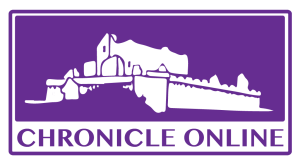
The Scottish Fire and Rescue Service are issuing advice to help people stay safe around fireworks and bonfires on Bonfire Night.
They know that watching fireworks can be great fun for children. However, they say that figures show that, more often than not, it’s children rather than adults who are injured by fireworks.
Over the past five years over 350 pre-school children, some as young as one year old, were treated in hospital for firework injuries. Be safe and always follow the fireworks code.
Children – including babies and toddlers – suffer over half of all firework injuries and many of these are babies and toddlers. Children’s scars may heal but the trauma for them and their parents can last for years.
We want children to enjoy fireworks but they need to know that they can be dangerous.
All children
- Supervise all children carefully and keep them well back from the bonfire and fireworks
- Never give sparklers to under-fives
- Show older children how to hold sparklers – away from their body and at arm’s length – and teach them not to wave them at other people or run while holding them
- Avoid dressing children in loose or flowing clothes that could catch alight easily, and give children gloves to wear when holding sparklers
- Steer clear of alcohol if you’re running a display or looking after kids
Sparkle safely
Did you know that sparklers get five times hotter than cooking oil? Sparklers are not toys and should never be given to a child under five.
- Store sparklers and other fireworks in a closed box in a cool, dry place
- Always light sparklers one at a time and wear gloves
- Never hold a baby or child if you have a sparkler in your hand
- Plunge finished sparklers hot end down into a bucket of water as soon as they have burnt out. Remember, sparklers can stay hot for a long time.
- Don’t take sparklers to public displays. It will be too crowded to use them safely
In an emergency
- Cool the burn or scald with cold water for at least 10 minutes
- Cut around material sticking to the skin – don’t pull it of
- Don’t touch the burn or burst any blisters
- Cover the burn with clean, non-fluffy material – clingfilm is ideal – to prevent infection
- If clothing catches fire, get the person to stop, drop to the floor and roll them in heavy material like a curtain
- Get advice from your doctor or accident and emergency department at your local hospital


Leave a Reply